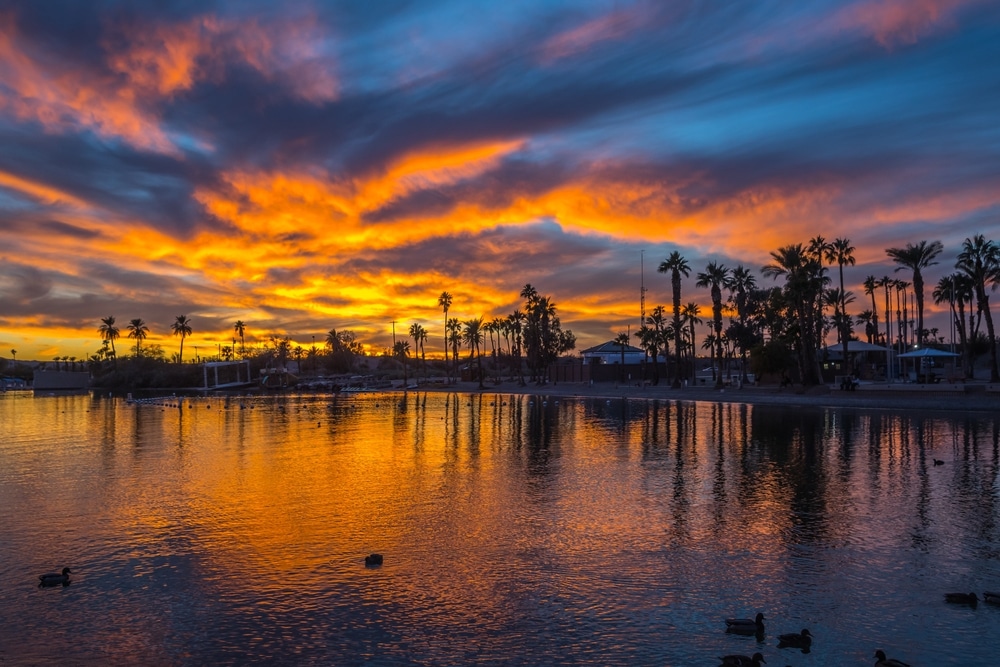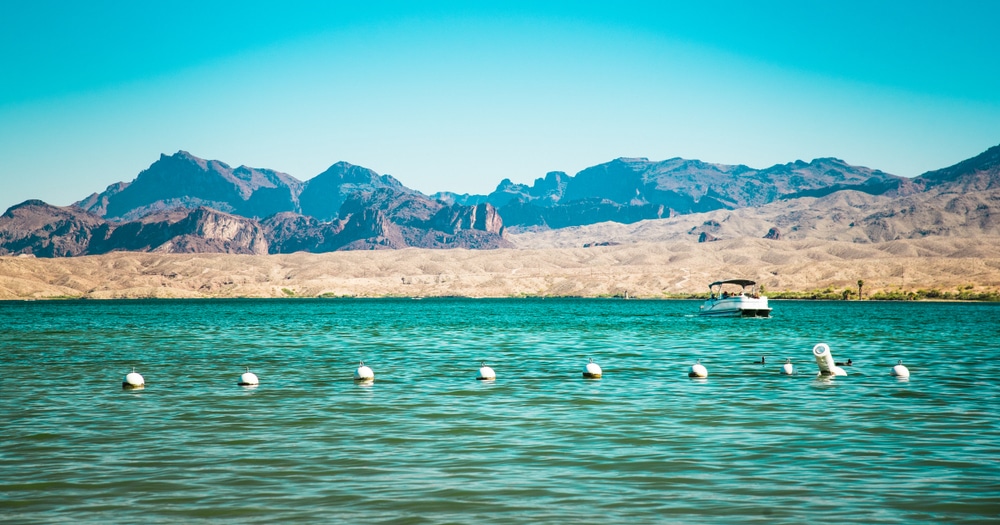Western Arizona stands as a testament to nature’s remarkable contrasts and human perseverance. This vast region stretches along Arizona’s western border, defined by the mighty Colorado River that carves its way through desert landscapes, creating a lifeline of blue amidst golden sands and rugged mountains. Here, visitors find themselves immersed in a land where ancient geological forces have shaped breathtaking canyons, valleys, and mountain ranges that glow with vibrant colors at sunrise and sunset.
Geographically, Western Arizona encompasses everything from the high desert plateaus near the Grand Canyon’s western rim to the low desert valleys bordering California and Mexico. The region’s climate varies dramatically from the scorching summers of Yuma (one of America’s hottest cities) to the more moderate temperatures in higher elevation communities like Kingman. What unites this diverse landscape is the ever-present Colorado River system, which not only forms the state’s western boundary but also creates a series of lakes and reservoirs that have transformed parts of this arid region into unexpected water recreation paradises.


The history of Western Arizona reads like an epic American tale. Long before European contact, Native American tribes including the Mohave, Chemehuevi, Cocopah, and Quechan made their homes along the life-giving river corridors. Spanish explorers later ventured through these lands, followed by American trappers, miners, and settlers who established communities around mineral discoveries, river crossings, and eventually, the transcontinental railroad.
This region witnessed the dramatic gold and silver rushes of the 19th century, the construction of monumental dams that tamed the Colorado River in the 20th century, and the rise of tourism and retirement communities in recent decades. The remnants of this rich history are visible everywhere—from preserved pioneer structures and mining equipment to the massive engineering achievements that created Lake Havasu, Lake Mohave, and other waterways.
Western Arizona’s economy has evolved from its mining and ranching roots to embrace tourism, agriculture, transportation, and increasingly, renewable energy. The abundant sunshine has made this region ideal for some of the nation’s largest solar installations, while the fertile valleys near Yuma produce an astonishing percentage of America’s winter vegetables. Meanwhile, communities along Route 66 and the Colorado River have reinvented themselves as destinations for history enthusiasts, water sports lovers, off-road adventurers, and snowbirds seeking warm winter escapes.
The culture of Western Arizona blends Native American traditions, Hispanic influences, pioneer heritage, and modern desert lifestyle into something uniquely its own. This is a place where rodeos and powwows maintain their cultural significance, where military history from Fort Yuma to modern testing ranges has shaped communities, and where the spirit of independence remains as strong as the desert sun.
Western Arizona’s landscape tells the story of millions of years of geological drama. The Black Mountains near Kingman and Bullhead City rise dramatically from the desert floor, showcasing volcanic activity that shaped this region. Further south, the Kofa Mountains create a jagged skyline that harbors bighorn sheep and rare desert flora in protected wilderness areas.
The Colorado River itself represents the region’s most significant natural feature, having carved its path through resistant rock to create deep canyons with stratified walls that reveal Earth’s ancient history. Even the seemingly barren desert plains contain remarkable adaptations of life, from the iconic saguaro cactus to desert wildflower blooms that transform the landscape after seasonal rains.
Visitors exploring Western Arizona will discover:
Few regions in America display their layered history as visibly as Western Arizona. The ancient trails used by indigenous peoples eventually became Spanish colonial routes, then American wagon roads, railroads, and finally modern highways. Each era has left its mark:
The blend of cultures remains evident in modern Western Arizona, where annual celebrations honor this diverse heritage—from traditional Native American gatherings to Mexican fiestas in border communities to pioneer days festivals that commemorate the region’s settlers.
Western Arizona offers an outdoor playground where land and water activities create endless opportunities for adventure. The Colorado River system serves as the centerpiece of water recreation, with:
On land, the region boasts:
For those seeking less strenuous experiences, the region’s scenic byways offer spectacular driving routes with designated viewpoints that showcase the dramatic landscape without requiring visitors to venture far from their vehicles.
The seemingly harsh desert of Western Arizona hides an agricultural miracle. The combination of abundant sunshine, Colorado River irrigation, and ideal winter growing conditions has transformed portions of the region into America’s winter vegetable garden. Yuma County alone produces over 90% of the nation’s leafy greens during winter months, while the area’s date palms yield sweet harvests that rival Middle Eastern varieties.
This agricultural prowess represents human innovation in an extreme environment—a theme that continues with:
Western Arizona’s character comes alive through its diverse communities, each with its own unique story and attractions. From north to south, visitors will discover:
A riverside community offering water recreation and casino access
A remote enclave with fascinating social history and stunning red rock backdrops
The historic heart of Route 66 with growing cultural attractions
Home to the relocated London Bridge and a premier waterfront lifestyle
Gateway to the Colorado River Indian Reservation and off-road recreation
A geological treasure hunting mecca that transforms seasonally
Where authentic Western heritage thrives in historic buildings and working ranches
America’s sunniest city with rich military history and agricultural innovation
A vibrant border community connecting American and Mexican cultures
Showcasing rural agricultural traditions and Hispanic heritage
A small farming community providing access to pristine desert wilderness
Each of these communities welcomes visitors with Western hospitality and unique attractions that tell different chapters of the region’s story. Click through to their dedicated pages to discover local festivals, hidden gems, and visitor information that will help you plan your Western Arizona adventure.
Western Arizona rewards visitors in every season, though each brings distinct experiences:
Winter (November-February) brings mild temperatures perfect for outdoor exploration, along with the arrival of thousands of seasonal residents and visitors. This peak season offers the fullest range of events and activities, from Quartzsite’s massive gem shows to agricultural tours in Yuma.
Spring (March-April) treats visitors to possible wildflower blooms, pleasant temperatures before summer heat arrives, and less crowded attractions as winter visitors begin departing.
Summer (May-September) showcases the dramatic beauty of early mornings and evenings, with water recreation providing relief from daytime heat. Surprising summer values on accommodations make this a budget-friendly time for water enthusiasts.
Fall (October-November) offers increasingly comfortable temperatures, the harvest of dates and other regional crops, and the beginning of desert hiking season.
Travelers should consider the region’s vastness when planning—distances between communities can be significant, with limited services in between. Most visitors find that focusing on either the northern section (Kingman/Bullhead City/Lake Havasu) or the southern portion (Yuma and surrounding communities) allows for a more relaxed exploration, though connecting these areas via Highway 95 creates a fascinating multi-day journey.
Western Arizona invites you to discover a side of the Grand Canyon State that many travelers miss. Here, beyond the saguaro-dotted landscapes of Southern Arizona and the red rock wonders of the north, you’ll find communities shaped by river and desert, history and innovation, isolation and connection.
This is a region where you can:
The communities profiled in the following pages offer gateways to these experiences and more. Each has cultivated its own relationship with this demanding yet rewarding landscape, creating distinctive opportunities for visitors to connect with Western Arizona’s spirit of adventure and resilience.
Begin your journey through Western Arizona by exploring these community profiles, where you’ll find local insights, practical information, and inspiration for your own desert discovery.
Your Western Arizona adventure begins here.
We use cookies to improve your experience on our site. By using our site, you consent to cookies.
Manage your cookie preferences below:
Essential cookies enable basic functions and are necessary for the proper function of the website.